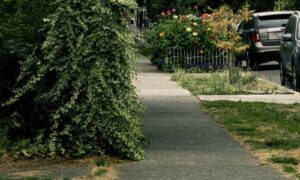Slough sedge is native to western North America from British Columbia to California where it grows in wetland habitats. The plant produces upright, angled stems approaching 1.2 meters in maximum height, growing in beds or colonies from rhizome networks. The inflorescence is a cluster of flower spikes accompanied by a long leaflike bract. The lens-shaped seeds are eaten by many kinds of wildlife. Birds known to eat sedge seeds include coots, ducks, marsh birds, shorebirds, upland game birds, and songbirds. In addition to providing food for many wildlife species, sedges are also valuable for cover. Frequently they provide nesting cover for ducks, and their tufted growth furnishes concealment and bedding for other animals. Beavers, otters, muskrats and minks make their way through the sedges as they go to and from the water. Description from East Multnoma Soild & Water Conservation District
Home > Plant Guide >
Scientific Name
Family
Garden Type
Wildlife
Native Plant Region
Light needs
Water Needs
Plant Type
Bloom Color(s)
Height
Width
Months in Bloom
Safe Beneath Power Lines?

We’d like to maintain accurate and robust plant listings. If you see information that is not correct or that could be added to improve the listing, please let us know. Or if you’d like to suggest a plant to add to our plant guide, you can use this form do so. Thank you!

New types of vegetation can attract additional wildlife to an area. You might be surprised how a little green can go a long way!

Look closer…and meet the local insects that pollinate the plants around your Seattle neighborhoods. Learn about some of our amazing native pollinating insects.

Start a garden in a planting strip along the street. Explore our interactive corridor map, find what to grow, and start nurturing today.

Three inspiring local food justice practitioners will share how their work in urban farming improves access to healthy foods, fosters relationships to land, and builds community.

Some introduced plant species can diminish biodiversity. Other plants produce poisons that can harm wildlife. Learn what plants to avoid when figuring out what to plant or remove in your outdoor space.

Learn about the diversity in pigeon populations in the United States and the implications of this variability on the species.
Nature of Your Neighborhood is a collaboration between Birds Connect Seattle, the Capitol Hill EcoDistrict, and the Seattle Bird Conservation Partnership. Our goal is to foster relationships between the people and the nature of their neighborhoods.